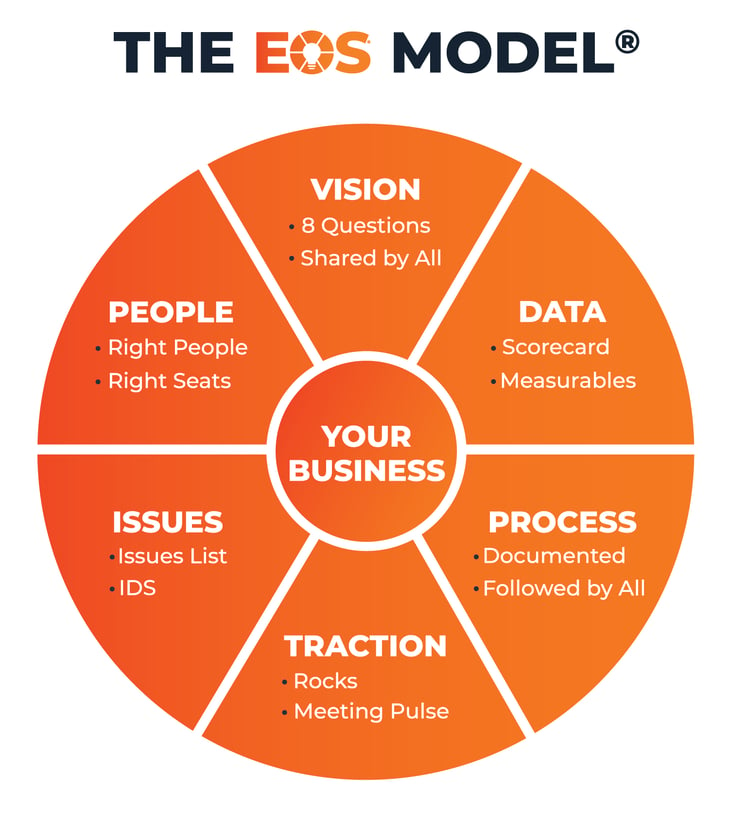
If you lead your business using EOS (Entrepreneurial Operating System), you know that Data is the third ingredient in EOS Worldwide's 6 Key Components™ of building a thriving business. Data gives you clarity in your progress toward your goals.
Once you have a vision and plan for where your company is going, and your people in the right seats, you'll want to set goals to move all areas of your organization forward. By creating S.M.A.R.T. (Specific, Measurable, Attainable, Relevant, Time-Bound) goals, you can be confident you'll achieve them, and in addition, you'll have all this lovely data to measure your progress and ensure you are still moving in the right direction.
What are you measuring?
Based on your 1-year plan and your budget, you will (or have) set three to seven important priorities for the year. These may be revenue goals, profitability targets, or other organizational metrics. These goals are then broken down into quarterly goals, or Rocks as they’re called in the EOS model. These Rocks represent your main priorities, the rocks in the road to achieving your goals.
The practice of setting and completing quarterly Rocks is essential for achieving Traction. You may have heard the analogy of filling a glass, first with rocks, then with pebbles, then with sand and finally with water. If you don’t put the rocks in the glass first, you will not be able to fit them in later after the pebbles, sand and water have consumed the space. Traction is achieved when focus, discipline, and accountability are instilled throughout the company so that everyone executes on that vision – every day.
More about Rocks.
The same is true for your highest priority goals. By conquering your Rocks first, you are working on your company's most important goals and moving your ultimate vision toward without being distracted by smaller, less critical issues.
Quarterly Rocks are defined first at the leadership level. As you cascade these goals down through the organization, each level’s Rocks support those of the level above. Rocks should be in writing, with milestones in place to help them be completed within the quarter. To learn more about writing S.M.A.R.T. Rocks, here is an excellent article by EOS Worldwide. It is one thing to have a vision, 1-year goals, and quarterly Rocks, but how do you measure your progress? For this, you will need to define specific, critical activities to be performed weekly, and assign a goal for each activity.
Tracking success on a Scorecard.
Performance of these critical activities are tracked on a Scorecard. Tracking five to fifteen activities is a good rule of thumb. If you try to track too many activities, you lose focus. Track too few and you risk being ineffective in reaching traction toward your goals.
A scorecard is a simple, written document, such as a spreadsheet, where weekly numbers are tracked. It is a visual representation of whether or not you are on track. Scorecard metrics may be financial or may be related to completion of certain activities or quality standards. If you have questions about creating a scorecard, here is another great resource from EOS Worldwide.
Each person in your organization should have at least one scorecard metric to which they are held accountable. This guides them in their work, helps demonstrate commitment, and delivers clarity and focus to the process.
Want to learn more about EOS?
If you have questions about EOS or other financial challenges for your organization, please let us know how we can help! We use the EOS System here at All In One Accounting; it is part of the reason why we are experiencing the award-winning growth year-over-year. It really does work!